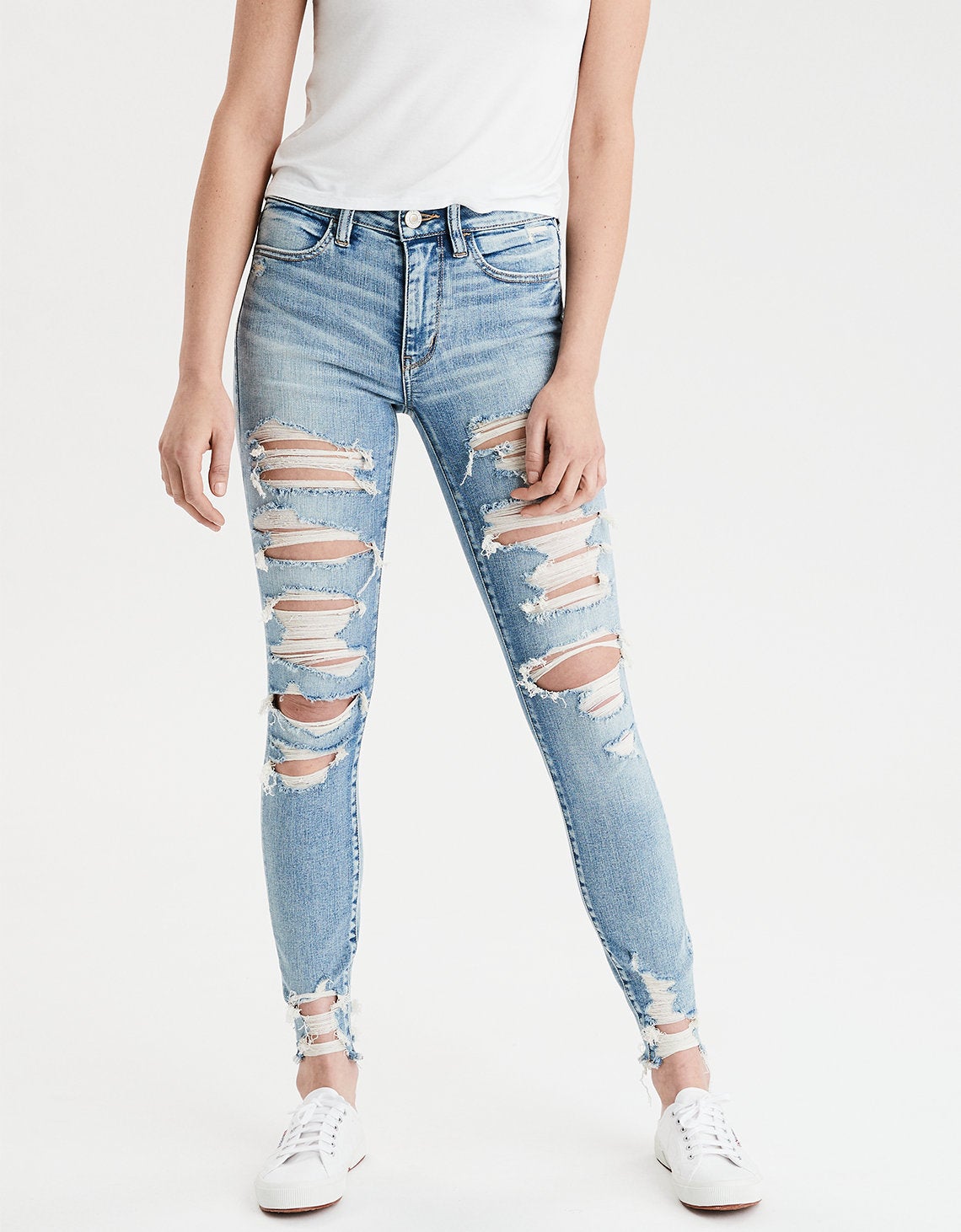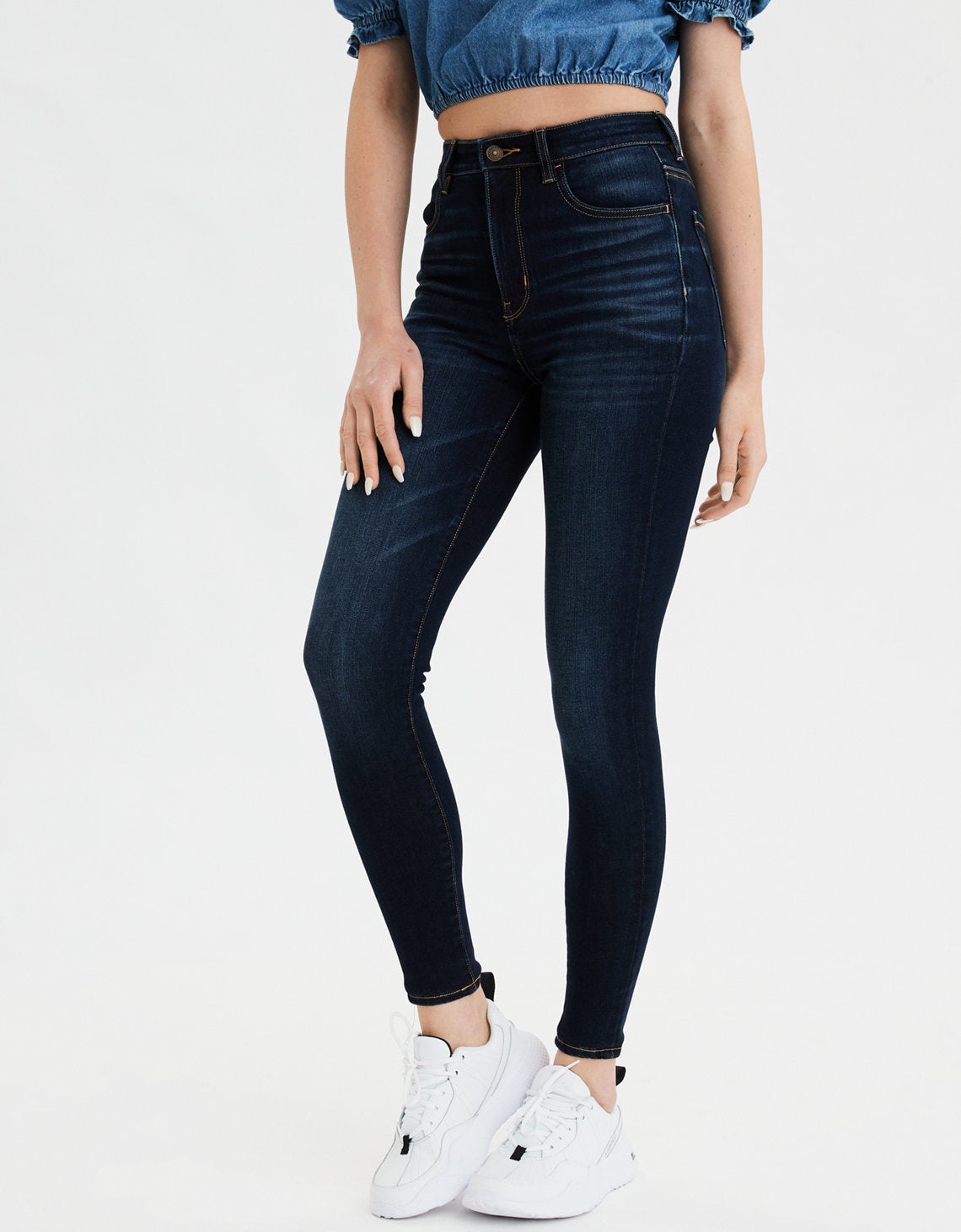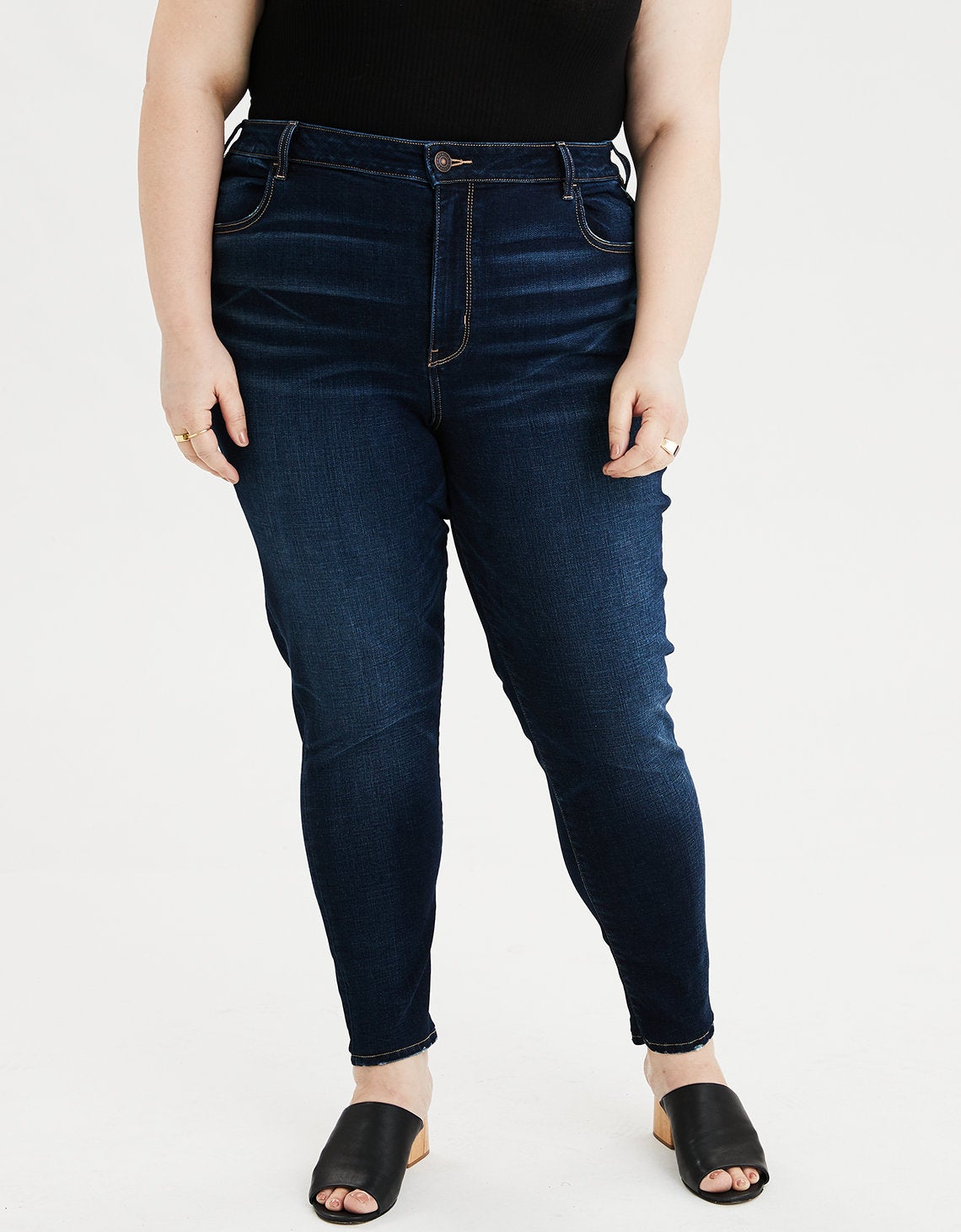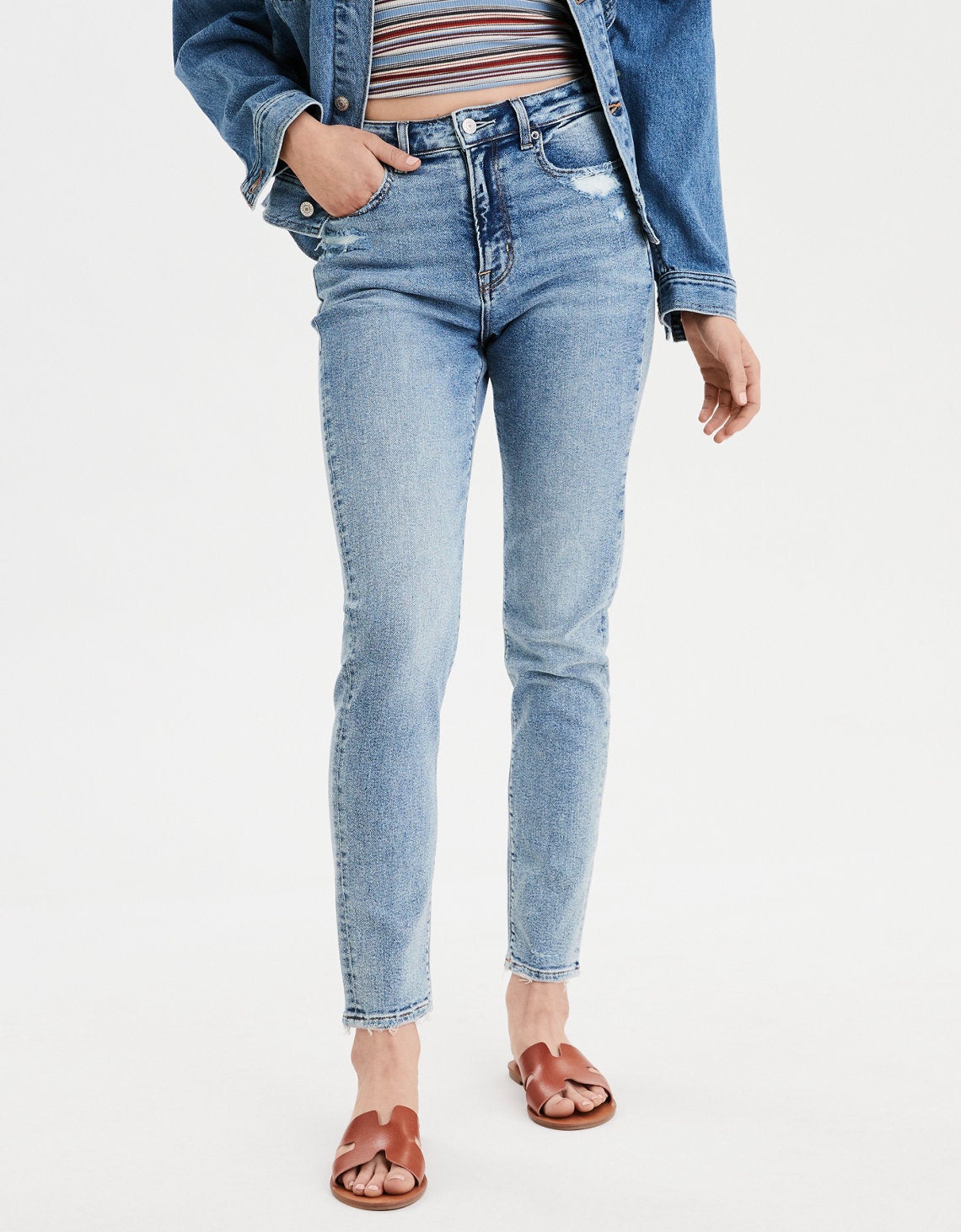In dance and denim, movement is key. Refinery29 is proud to team up with the LYCRA® Brand to introduce two promising young dancers, pictured here wearing American Eagle jeans equipped with LYCRA® dualFX® technology. It's an advanced blend of fibers for a great fit that moves with you, whether your style is hip-hop, tap, or something in between.
There are jeans that move with you, and then there are jeans that can keep up — and keep their shape — through endless fouettés. Here, dancers Jasmin Corley, 19, and Lizzy Howell, 18, come together from opposite ends of the country for one collaborative dance in their respective genres of hip-hop and tap, and one uplifting, meditative conversation.
AdvertisementADVERTISEMENT
Teaming up with LYCRA® Brand, we outfitted Corley and Howell in American Eagle jeans — made with shape-retaining LYCRA® dualFX® technology for total freedom of movement, in any size — and sat down with them to talk combatting stage fright, carving out spaces for themselves in the sometimes-exclusionary world of dance, and the ritual of preparation.
On meeting — and connecting — with other girls in dance
Jasmin Corley: "When it comes to girls, we're usually inspired by one another even if we're finna go head to head [in a competition]. It's still inspiring because it inspires the other dancer to go harder. And that’s really cool, even if people see it as 'they probably don't like each other.'"
Lizzy Howell: "With dance competitions, I usually stay to myself, because I'm not the typical dancer body, and I don't think people understand that I'm the same as them. Just because I look different doesn't mean you can't talk to me. When I do talk to people, I find that they were scared to talk to me because they didn't know how I would react."
JC: "I wasn’t afraid to speak to you. I knew that you dance, and I wanted to [talk to you] because we were going to be working together today. We [all] have to take that initial step, because if you don't, you might not get to meet [someone like] Lizzy, who's really cool. If you don't take that step, you’re not going to meet these great people and have those conversations."
AdvertisementADVERTISEMENT
“
When it comes to girls [in dance], we're usually inspired by one another.
”
On pre-show jitters and rituals
JC: "Everybody gets nervous before a big performance. But then you feel excited at the same time. The feeling you get through your body is you're powerful. Like three seconds before I go on, I'm nervous, like I have to go to the bathroom. Two seconds before I go on, I'm like, I'm so excited, we're going to kill it. Then, in that last moment, I’m ready to take the stage.
"I was very shy and quiet before I started performing. One of the tricks I used before, because I wore glasses, was I'd take my glasses off so I couldn't see anything. So I’d just go up there like, I can't see you guys anyway. But then when I got contacts, I tried to think, I don’t know these people, but I want them to remember my name. So I'm going to go out there and do it to the best of my ability. They don't know me now, but they will after the show."
LH: "[Before a show] I listen to the songs I'll be dancing to, and I do the [dances] in my head while I'm in the car, because I'm a perfectionist, so I need to make sure I don't forget what I'm doing onstage. My aunt stays in the dressing room while I go find a quiet place, and I start warming up to songs that aren't dance related, because it gets boring listening to dance music all the time. Once I'm warmed up, I start going through my solo; I have the music on my phone, and I mark through it. While I'm backstage, I don't watch the other people performing because it psychs me out.
AdvertisementADVERTISEMENT
"I'm mostly scared because I'm a very sensitive person. I don't really like people watching me dance, which doesn't make sense, because dance is all about people watching you. The excitement is because you've been working so hard on a little two-minute dance, and you finally get to show them what you've done. But it's also, What if they judge me? What if they don't like me? That's the fear I always have."
On the objects they always have backstage
JC: "I hold a necklace my mom and grandma gave me when I graduated high school. It's gold and says 'Jasmin' on it. It's my grandma's old chain, and my mom bought the pendant for me. My grandma used to wear the chain when she was a cheerleader, and she used to dance, as well. It makes me feel lucky. It's like they’re right there with me."
LH: "I pace a lot, and I pray; it's a thing I always do. I have a pin one of the dance moms at my former studio gave me. It's an angel in memory of my mom [who passed away]. I always pray to her, and I pray to God that I don't injure myself."
On dancing in American Eagle jeans, built for all bodies with shape-retaining LYCRA® dualFX® technology
JC: "They're super stretchy and movable. I feel like I can do a six-minute set in them."
LH: "It was really easy for me to dance in them; it felt like I was wearing a pair of leggings. The biggest move I could probably do [in them] is a split, and I've never done one in jeans before."
AdvertisementADVERTISEMENT
On seeking more inclusion in dance
JC: "I feel like a lot of people don't feel comfortable dancing. At my studio, I just want to be able to tell people that it's okay for them to do it — they don’t have to dance alone in their rooms."
LH: "I started at a studio in Delaware, where there aren't many dance studios. When I was 8 or 9, the director said that if I didn't lose weight, I couldn't go en pointe, and I'd have the same part in The Nutcracker for the rest of my life. I always knew I was bigger, but I didn't see it as a problem. But then when I got that talk, it was like, Oh, maybe I am too big to dance.
"I stayed there until I was 12, playing the same part in The Nutcracker. It just [seemed] like this was how it was going to be. I ended up switching studios, and that’s where I went viral. They supported me in the beginning, but then they'd pick costumes that weren't made for me. It was a white lace two-piece with almost my whole stomach showing, and when I told the teacher I wasn't comfortable, they gave me a separate costume that didn't look anything like what the other girls had. My aunt ended up making a two-piece with nude under it. The studio I'm at now is about an hour away from my house. They have people of all sizes; the teachers are all sizes. They accept everybody, which is a great thing for girls who want to dance."
AdvertisementADVERTISEMENT
On inspiring other young dancers
JC: "When I started dancing professionally, I joined a nonprofit in San Francisco called Project Level. There wasn't a dance department, so I started one, and now I teach kids from ages 7 to 15. [Preparing to teach and perform] is similar. It's great to see the kids encouraging one another, like I encourage the people I perform with or even myself. I have to lead these kids — that type of responsibility has helped me grow as a leader and dancer, because it makes me want to do better for the people watching me."
LH: "I've been dancing since I was 5, because after my mom died, my aunt put me in a bunch of different things trying to keep my mind off it. It was the one thing that stuck. The video of me went viral two years ago, and my aunt has always told me God has a reason for everything happening, and I believe that's true. Even though it's weird to me...I feel like I need to go out there and show little girls that you can do this, no matter your size. Now I feel like there's a greater purpose to me dancing."
“
I feel like I can do a six-minute set in [these jeans].
”
On responding to people who say "dance isn't a sport"
LH: "Not only do we have to do a lot of athletic things, but we also have to make it look easy and pretty. I dance about 12 to 20 hours a week, every day, so when people say dancers aren't athletes, it's kind of hurtful, because they don't see all the work that gets put into a two-minute piece — they just see the two-minute piece."
AdvertisementADVERTISEMENT
JC: "We do exactly what athletes do. We're putting in physical work, we're practicing, we're training. And just like when athletes have games, we have performances. It's the same story, just told a little differently."
On personal mantras
JC: "Trust in your process, because everybody's is different. It's going to take a process to take you where you want to go, but you’re going to have to trust it, love it, and wait on it. If I want to be a professional dancer, I have to train, meet people, make choreo; I have to maybe get on social media and make videos. But either way, I have to trust the process I started."
“
I feel like I need to go out there and show little girls that you can do this, no matter your size. Now I feel like there's a greater purpose to me dancing.
”
LH: "I tell myself this is what I love to do. And if people don't like me for it, that's their problem. It's just hard when you're at a dance convention and there are a lot of people there who don't look like you. I have to keep telling myself I'm doing this for a reason, and I can pull myself together.
With inclusive sizing and a movement-friendly fit, it's easy to do what you love in American Eagle jeans, built with LYCRA® dualFX® technology.
"I've been told multiple times not to dance, and I moved studios until I finally found a place that accepts and supports me. Find a group of people who accept you for you, and always do what you love."
AdvertisementADVERTISEMENT











